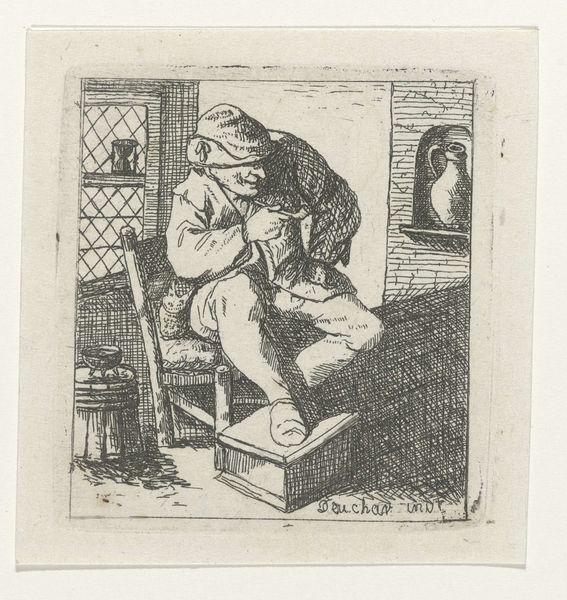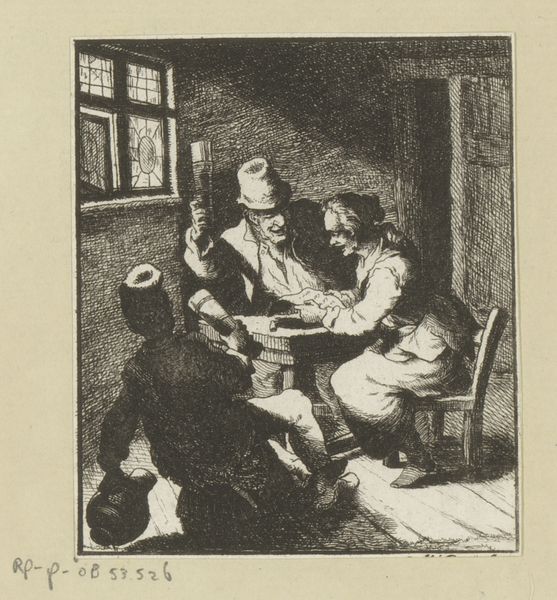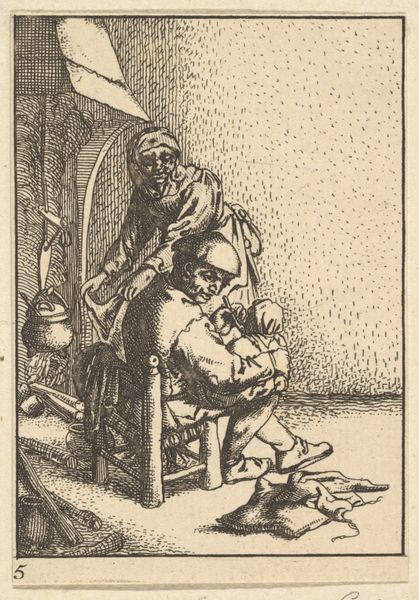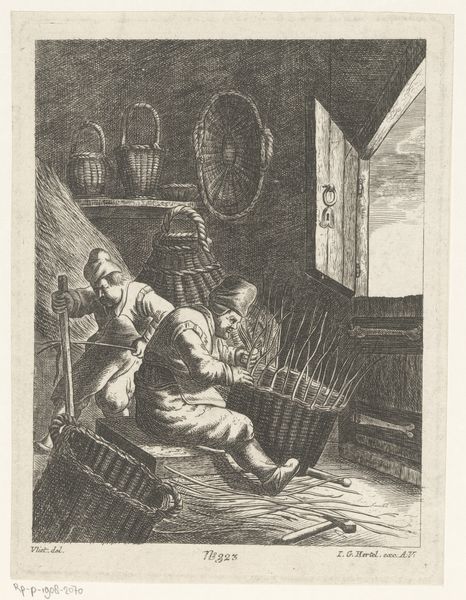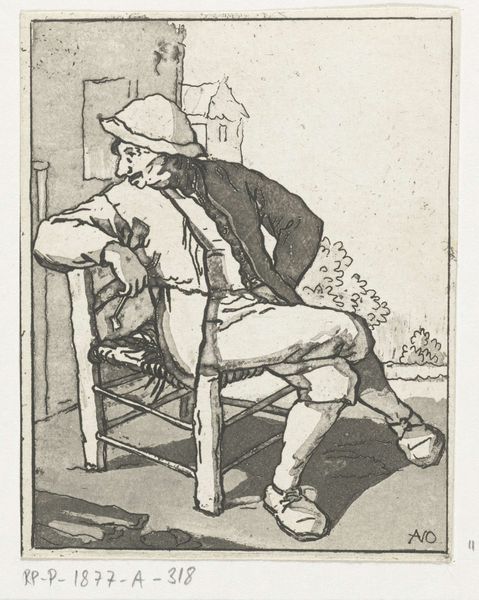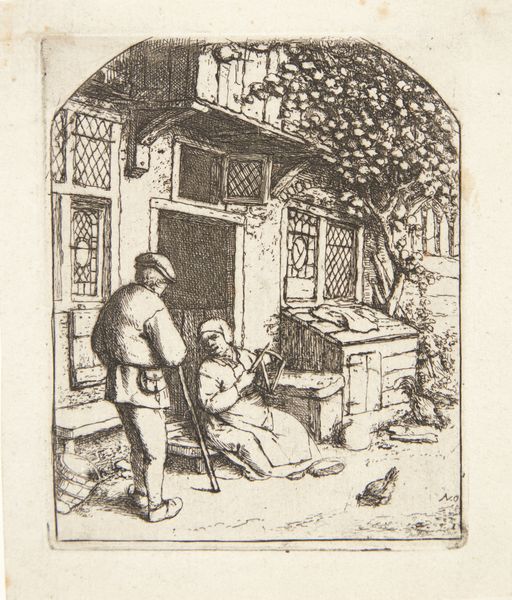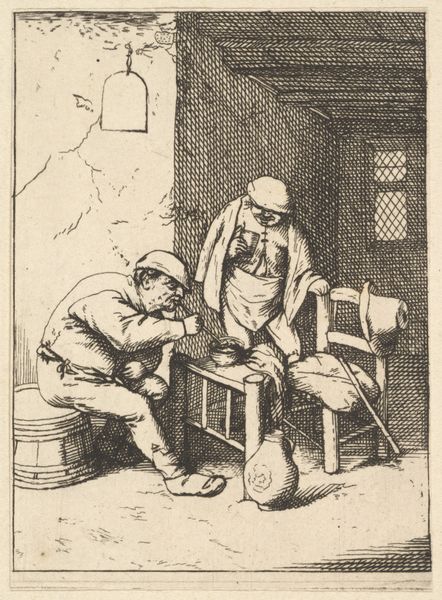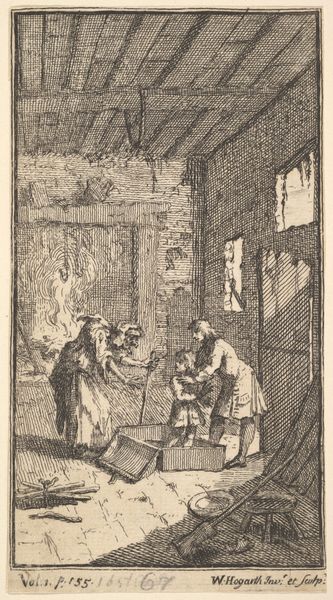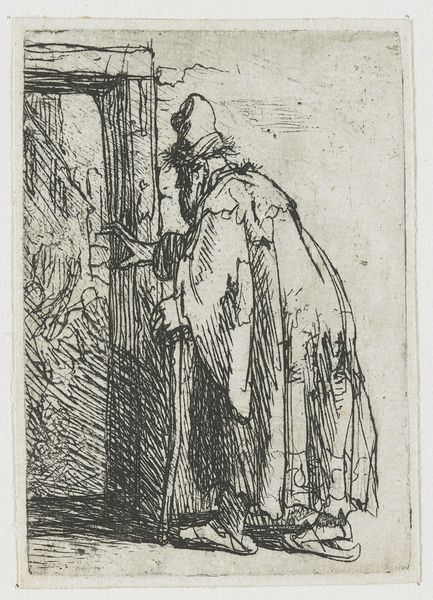
drawing, print, etching
portrait
drawing
dutch-golden-age
etching
line
genre-painting
realism
Dimensions: Sheet: 3 9/16 × 2 5/16 in. (9 × 5.9 cm)
Copyright: Public Domain
Curator: Well, I’m immediately struck by how brooding this etching is; almost claustrophobic with all that intense line work! Editor: We’re looking at Adriaen van Ostade’s “Man Sitting by a Window (copy)," believed to have been created sometime between 1610 and 1685. This piece is currently housed at the Metropolitan Museum of Art. Curator: "Copy," eh? Perhaps of himself? Or life drawing perhaps? He has such an utterly dejected slouch. And the heavy lines only seem to compound it. Like the very room is judging him. I find myself almost wanting to...cheer him up. Editor: Right. Van Ostade was known for his genre paintings, and this etching fits neatly into that tradition. He's documenting the everyday life of working-class people, offering a glimpse into their world. Notice how the window isn't just a source of light, but almost a barrier, keeping him within the confines of his social reality. Curator: Barrier is a good word! But a romantic would maybe consider the outside as something that he, our sad bloke here, can reach if only he could summon the ambition or good fortune to pull himself from that very spot! Editor: Possibly, but Ostade, coming from a lower middle-class background himself, understood these realities. It makes me think about the very limited social mobility of the time and who truly benefited from Dutch Golden Age prosperity. How was wealth being produced, and at what cost to individual well-being and perhaps even the sense of an individual's possibilities? Curator: I am fond of the lines here, of course, a veritable haystack of hatch marks building and unbuilding forms; a light form dissolving in pure dark. All that in such a humble composition. Very grounding! And to think this hangs in the Met, all the way in New York, centuries after it was crafted... Editor: A powerful reminder that art, even in its quietest forms, can open up entire worlds of social history and spark important dialogue. And in a museum it acquires still more context, framed by centuries and social movements and revolutions…
Comments
No comments
Be the first to comment and join the conversation on the ultimate creative platform.

